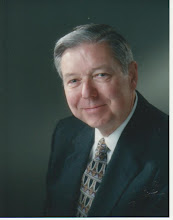Leisure Pursuits for Middle-Aged Adults

THE "MIDDLE AGES" for our adult population include individuals from the mid-30s through the 50s. It is during these years that an immense diversity in lifestyle is revealed. Some of these folks are devoted to their families, while others remain unattached and give increased time to personal involvements. Some are sports-minded or outdoor-oriented, while others lean toward the arts, hobbies, or literary interests. Yet, large numbers in this age group place a high value on the creative satisfaction found in work.
.
Patterns of leisure usage usually begin to change for people in the middle adult years as their own children become more independent. For example, mothers who have spent a lot of time and energy caring for the family's needs begin to find these demands less pressing. Often the discovery of more free time, and their own need to find different kinds of fulfilment in life, opens up many new possibilities and challenges.
.
Many middle-aged adults shift their leisure pursuits away from what has been mostly children-centered or family-centered activities. They begin to explore more fun-filled experiences on their own, with their spouse, or both. While it is true that some middle-aged adults tend to become less active physically, it is highly desirable that at least some of the adventures, sports, games, and other more vivacious activities of yesteryear be continued for both men and women.
.
For years, authorities in the medical field have emphasized the importance of exercise, fitness, relieving stress, and doing everything possible to maintain good health. If for no other reason but this one, middle-aged adults need to recreate. People in this age bracket need to be physically active participants in regularly scheduled leisure activities.
.
Americans can now look forward to the "flourishing forties" and the "flaming fifties," says author Gail Sheeby.(1) The importance of recreation and leisure to middle-aged adults has been documented by numerous research studies. Valeria Freysinger discovered that leisure had implicit additional meanings, and that it was "an agent for change; an opportunity for exerting personal choice and freedom; an opportunity for relaxation, enjoyment, and rejuvenation; a means of affiliation and interaction with others; an area for self-expression and gaining feelings of mastery and accomplishment; and, a time for maintenance of friendships."(2)
.
When it comes to developing interests regarding things to do during leisure, it is good to remember: "the earlier - the better." Leisure habits formed, and experiences enjoyed, in the mid-30s tend to carry-over into the 40s, 50s, and beyond. Ideally, several free-time pleasures of the teenage and young adult years are already embedded enough to lead many people into their middle adult years.
.
It's not necessarily easy living life as a middle-aged adult. There are many responsibilities, demands and challenges. But, in addition to carrying-out these requirements, people in this age bracket learn to pursue some leisure activities. To be completely saddled by the necessities of the world of work not only shortchanges the quality of life, but maybe even life itself. And, no job - or other obligation - is worth that.
_____
(1) Gail Sheeby, New Passages: Mapping Your Life Across Time. (New York: Random House, 1995).
(2) Valeria Freysinger, "Dialectics of Leisure and Development for Men and Women in Mid-Life: An Interpretive Study." Journal of Leisure Research (Vol.27 No.1, 1995): 61-84


0 Comments:
Post a Comment
<< Home